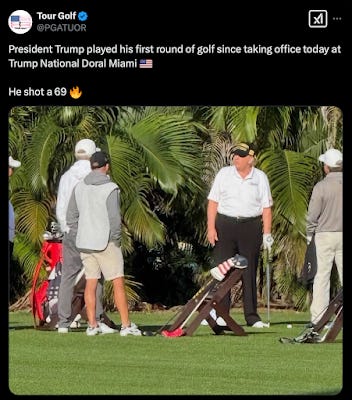In his blog on January 29 about still another of Trump’s egregious public lies, Peter bemoaned the current lack of an effective spokesperson from the Democratic Party to counter them. In the instance he cited, it was the California Department of Water Resources that issued a public statement setting the record straight, but obviously it commanded a small fraction of the attention Trump did.
The problem is real, and it’s difficult to solve because, as Peter pointed out, there are no longer news sources that the majority of Americans who follow public affairs look to for reliable information. They exist, but the info universe is far more fragmented than it was when the three broadcast networks—CBS, NBC and ABC—dominated the news field along with responsible print journalism at the local level. Further, all too many media outlets are geared to specific and politically homogenous audiences.
Anyone can now put out information on digital platforms, not just on niche ones but on those for the general reader such as X, Reddit and Instagram. So, there is enormous competition for our attention.
As Tim Wu wrote in The Attention Merchants, “The business model of the internet is the seizure of attention.” The President of the United States has an enormous advantage in that competition. His pronouncements aren’t transmitted only by the siloed media that favor him; they are also transmitted by news outlets that still try to keep us abreast of what’s happening despite the personal politics of their owners, reporters and editors. How can the POTUS advantage be challenged by his/her political opponents? Specifically, how can Democrats rival Trump for attention? Peter looks to the emergence of an articulate and media-genic Democratic politician from somewhere out there who, on his/her own initiative, becomes the public face of the party whether other Democratic leaders like it or not. Even if someone emerges quickly enough to help us when we need it most, we need only remind ourselves that Trump became the public face of the Republican Party in exactly that way to realize the undesirability, if not the danger, of that solution.
There is another solution. It’s for the Democratic Party to function more like the opposition party in a parliamentary system. In Great Britain, each party has a leader whether it is in or out of power. That leader speaks for the party, and if s/he deviates too much from the policy positions of the party, s/he is replaced. In that way, the party maintains a relatively stable identity and public presence. I know that our system is different. Also, I know that our two major parties no longer have the institutional apparatus they formerly had before nominees were chosen by popular vote in primaries rather than by party pros in convention.
However, we have one precedent for both major parties to choose a national spokesperson. Beginning in 1966, when Senate Minority Leader Everett Dirksen and House Minority Leader Gerald Ford officially responded to President Lyndon B. Johnson’s State of the Union address, both parties have designated someone to respond on their behalf. The media that cover the address usually also cover the response. I see no reason why this practice couldn’t be extended to other occasions.
I don’t want some charismatic leader to become the public face of the Democratic Party if there is no check by other party leaders on what s/he says. The Republican Party today is the Party of Trump. He has led it to temporary victories, but what will it be after 2028? Peter’s emphasis on personality rather than policy, style over substance, has important implications for campaign strategy—candidates would do well to heed much of his advice—but by itself it is a prescription for long-term disaster, not just for Democrats, but for our nation.
[Note: To get daily delivery of this blog to your email gfo to: https://petersage.substack.com. Subscribe. Don't pay. The blog is free and always will be.]
























